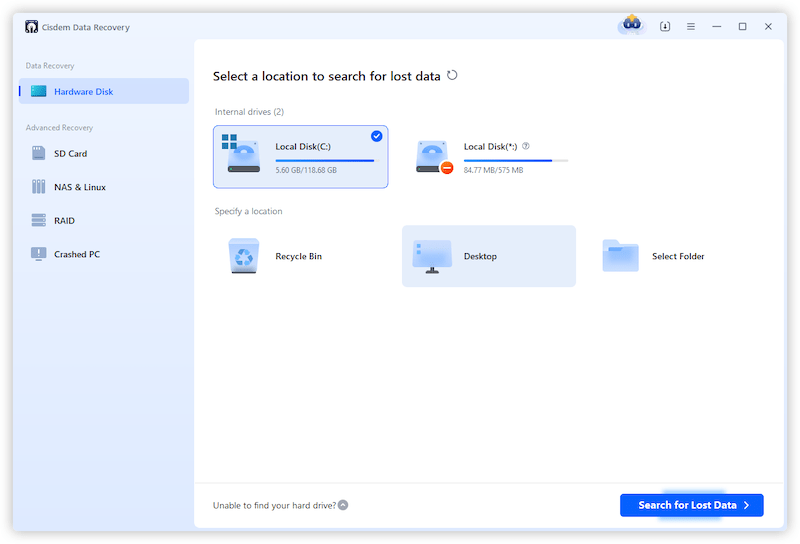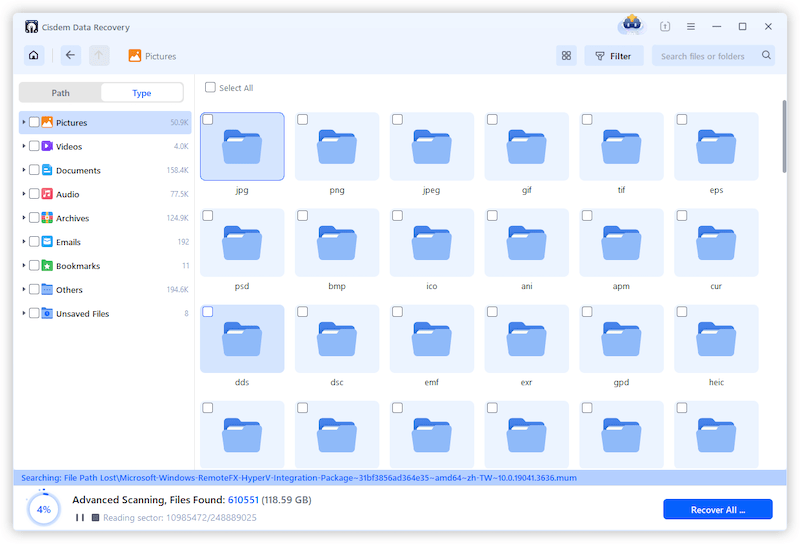Adobe After Effects (AE) is a motion graphic application that plays a significant role in the post-production process of films, video games and televisions. Due to After Effects crash, system failure, hard drive damage, human error, virus attack or more factors, AE users may suffer the corruption or even loss of After Effects project (AEP) files.
To solve such problems, in this page we round up several proven solutions to recover unsaved, deleted, lost or corrupted files in After Effects. These solutions are applicable for any After Effects versions, including CC, CS6, CS5, version 2024 (24.2) and older. Here we go.
 Free Download Windows 11/10/8/7
Free Download Windows 11/10/8/7 Free Download macOS 10.9 or later
Free Download macOS 10.9 or later
People are prone to get an unsaved AEP file when After Effects crashes or computer fails abruptly. If you’re finding yourself in this position right now, here comes the right part. 5 native methods to recover unsaved projects in After Effects without other third-party tool, are going to be laid out for your information.
There is a built-in backup feature called AutoSave, which will automatically save the changes we have made to our After Effects projects at specific intervals, to reduce the chance of data loss. Before trying this method, make sure the AutoSave feature has been activated properly, so that your unsaved AEP file can be regained easily.
This option is also associated with After Effects AutoSave. If the unsaved project isn’t detected by AutoSave when Adobe AE relaunched, take an attempt to manually find the backup folder. Since AutoSave function backs up AEP files regularly into a certain folder, it works to recover unsaved projects from this After Effects recovery folder. See below for how to achieve it.


AutoSave feature not enabled? Don’t worry. Another pretty straightforward way to recover lost After Effects projects is opening recent files. Once you closed a project without saving or AE quit unexpectedly, it's probable to find your unsaved AEP file from the list of recent files. Bear in mind that this solution is feasible only if you have edited that project fairly recently. Otherwise, skip this tutorial and proceed to other tips.

Adobe AE also generates temporary files during your editing process. So the fourth method to restore unsaved projects in After Effects is checking the Temp folder in AE directory to see if any temporary AEP files exist. Although these files may not contain the complete project, they could include partial or recent versions that will be useful for recovery. Check out the instructions below on Windows.


Suppose that you’re running CC (Creative Cloud) version of Adobe After Effects and have initialed the sync option, this final option is for you. The unsaved AE projects are potential to have been automatically backed up to the cloud storage already. To verify if the lost projects exist online, you’re allowed to use Adobe Creative Cloud app or website. Let’s look at the steps needed for recovering unsaved AE projects online.

After Effects progresses and projects get deleted or disappeared accidentally? The first place you should check is Windows Recycle Bin or Mac Trash. If your AEP files are not available there, keep reading to obtain 3 more approaches.
Sometimes the lost projects are just misplaced or mistakenly moved to a different location, rather than erased from your computer’s file system. In this case, use search function on your operating system, such as Mac Spotlight and Windows search box, to search for the file name or file extensions (.aep or .aepx for After Effects project files). If luckily, missing AEP files will come back within seconds.
So far, if you still can’t find your project file, it’s very likely that they are permanently removed from your local PC drive. Then you're strongly recommended to consider using AEP file recovery software. The key point is to select a reputable and reliable one, like Cisdem Data Recovery.
Among the multitude of data recovery tools available, Cisdem stands out as the leading choice due to its patented technology and advanced scan and recovery algorithms. With its exceptional support of file formats, in addition to After Effects projects, it can also retrieve deleted files of images, audios, documents, archives and more than 1000 types.
Here are a couple more reasons to consider Cisdem Data Recovery:
 Free Download Windows 11/10/8/7
Free Download Windows 11/10/8/7 Free Download macOS 10.9 or later
Free Download macOS 10.9 or later


While most of us always ignore the importance of backup, it’s a truth that all kinds of data loss will be simply resolved with backup in hand. Assuming you have created any backups of the lost AEP files beforehand, head over to find and check the backup folder for easy recovery.
For Windows users, the AEP backup files could be accessed through File History, Previous Versions, or OneDrive platform. For macOS users, After Effects projects tend to be backed up via Time Machine or iCloud online storage. Alternatively, an external hard drive working correctly is the appropriate media to backup AEP files as well.
After Effects crashing or other errors may not lead to project files unsaved or lost, but causes corruption instead. As the following picture shows, one of the major symptoms for a corrupted AEP file is disordered color lines on the footage screen. To deal with this common issue, we’re obliged to relink missing files in After Effects.






That’s all for this page. We hope that these 9 tips could be helpful. If you readers have more ideas about After Effects project file recovery, comments are warmly welcome.

Zoey shows a great interest in what she does. Although not long with Cisdem, she has possessed a professional understanding of data recovery.

